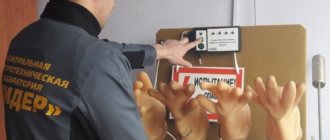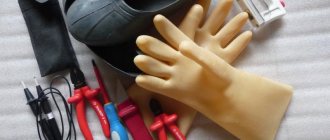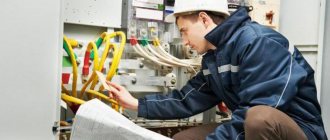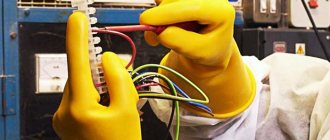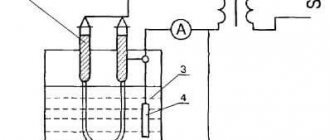What is PPE: decoding and definition
PPE stands for “personal protective equipment.” These are means used by the employee to prevent or reduce exposure to harmful and dangerous production factors, as well as to protect against pollution. They are used in cases where work safety cannot be ensured in any other way (for example, by the design of equipment, organization of production processes, architectural and planning solutions and collective protective equipment).
PPE may include special clothing, special footwear, isolation suits, respiratory protection, hand protection, head protection, face protection, hearing protection, eye protection, and various safety devices.
Efficiency
Having dealt with the question “what is PPE?”, you need to find out how well these products protect a person from the effects of negative external factors.
The effectiveness of PPE is primarily expressed in the following positive aspects:
- Reducing the number of accidents at work by 30-50%;
- Reducing the number of cases of occupational diseases by 20-25%;
- Increased life expectancy;
- Improving the quality of products or services provided by creating more comfortable and safe working conditions for employees.
Important! These points, due to the high efficiency of personal protective equipment, can only be realized with the proper use of PPE, timely safety training, and a conscious and conscientious attitude to the work of each employee.
Types of personal protective equipment (PPE)
According to GOST 12.4.011-89 “System of occupational safety standards (SSBT). Protective equipment for workers. General requirements and classification” personal protective equipment, depending on the purpose, is divided into 12 classes:
- insulating suits (pneumatic suits, waterproofing suits, spacesuits);
- respiratory protection equipment (gas masks, respirators, self-rescuers, pneumatic helmets, pneumatic masks, pneumatic jackets);
- special protective clothing (sheep coats, coats, short coats, short fur coats, capes, raincoats, half-coats, dressing gowns, suits, jackets, shirts, trousers, shorts, overalls, bib overalls, vests, dresses, sundresses, blouses, skirts, aprons, shoulder pads);
- foot protection (boots, boots with an extended top, boots with a short top, ankle boots, boots, low shoes, shoes, shoe covers, galoshes, boots, slippers (sandals), high boots, boots, shin guards, over the knee boots, knee pads, foot wraps);
- hand protection (mittens, gloves, semi-gloves, finger pads, palm pads, wrist pads, sleeve pads, elbow pads);
- head protection (hard hats, helmets, balaclavas, caps, berets, hats, caps, headscarves, mosquito nets);
- face protection equipment (face shields);
- eye protection (goggles);
- hearing protection equipment (anti-noise helmets, anti-noise earplugs, anti-noise headphones);
- fall protection equipment and other safety equipment (safety belts, cables, hand grips, manipulators, knee pads, elbow pads, shoulder pads);
- dermatological protective products (protective creams, skin cleansers, reparative agents);
- complex protective equipment.
Personal protective equipment is also classified depending on the influencing factors:
- protection from mechanical damage;
- protection from industrial pollution;
- protection against watery solutions;
- protection against non-toxic dust;
- protection against toxins and other chemical compounds;
- protection from biological factors (viruses, microbes);
- radiation protection;
- protection from electrical influence;
- protection when working in low visibility areas.
Varieties
Work equipment is produced for different seasons and conditions of use. Each profession is specific: for some specialists, protective characteristics come to the fore, for others - comfort, and for others - a presentable appearance. Therefore, in addition to work suits, this includes clothing for service sector workers and medical staff. Such a wide assortment aroused interest among designers, so the development of a corporate style has become one of the ways to promote in the thematic market.
Requirements for personal protective equipment
Here are the basic requirements for PPE according to GOST 12.4.011-89:
- Protective equipment for workers must ensure the prevention or reduction of hazardous and harmful production factors. The PPE itself should not be a source of hazardous and harmful production factors.
- Protective equipment must meet the requirements of technical aesthetics and ergonomics.
- The choice of a specific type of protective equipment for workers should be made taking into account the safety requirements for a given process or type of work.
- PPE should not change its properties during washing, dry cleaning and disinfection.
- Personal protective equipment must be assessed for protective, physiological, hygienic and performance indicators.
- Requirements for labeling personal protective equipment must comply with GOST 12.4.115 and labeling standards for specific types of personal protective equipment.
- Personal protective equipment must have instructions indicating the purpose and service life of the product, the rules for its operation and storage.
Who buys PPE?
The employer, a legal entity or an individual, regardless of the organizational and legal form of ownership, is obliged to provide workers with protective equipment. They are purchased or rented only at the expense of the enterprise, which is prescribed at the legislative level. At the same time, the employer can delegate their assessment and purchase to specialists of the enterprise. Please note that employees can only be issued with those protective equipment that have undergone mandatory certification or declaration of conformity in the manner established by the legislation of the Russian Federation on technical regulation. In addition, they can sometimes be used for personal needs, such as by householders, farmers or artisans.
Where to store and how to care?
According to the regulations, protective equipment must be located in specially adapted premises before they are issued to employees and after they are handed over at the end of the shift. The passport of each product contains information about the rules of storage and maintenance. They must be observed so that the service life is no less than stated. PPE needs regular care: washing, cleaning, repairing. Not every organization can afford separate storage facilities and staff responsible for proper maintenance of funds. In this case, it is recommended to use the services of a third-party specialized company.
Key points and terms
Electrical protective equipment - (items) that serve to protect people from electric shock, exposure to an electric arc or electromagnetic field when working in electrical installations.
They are divided into basic and additional.
Basic electrical protective equipment - their insulation can withstand the operating voltage of electrical installations for a long time, which allows you to touch live parts that are energized.
Additional electrical protective equipment - by itself cannot provide protection against electric shock and is used in conjunction with basic electrical protective equipment.
All electrical protection means in electrical installations must meet the requirements of state standards.
I recommend that when purchasing them, be sure to check the availability of certificates of conformity. Especially if you are buying them for your staff. Because if you are a manager and a malfunction is discovered, they will ask you.
Personnel carrying out repair work on electrical installations must be fully provided with all the necessary protection, trained in the rules of their use, and must use them to ensure the safety of the work.
Protective equipment must be present as an inventory in electrical installation rooms. Can also be issued for individual use.
You should use only labeled electrical protective equipment, indicating the manufacturer, name or type of product and year of manufacture. Be sure to pay attention to the test stamp! He must be present. If the test period has expired, you have the right not to start work. Remember this and always pay close attention to this. Your safety is at stake and more.
Insulating electrical protective equipment should be used only for their intended purpose and in electrical installations with a voltage no higher than that for which they are designed. This data is written in the operating manual, instructions, passport for a particular electrical protection device. Also pay attention to the weather conditions in which you are going to work.
We will not go into details about storage conditions, just a few words - protective equipment must be stored in conditions that ensure serviceability and suitability for use; they must be protected from mechanical damage, contamination and moisture.
Nowadays, you can find cases where enterprise management neglects these requirements. It costs money, etc. Dear electricians, if you, contrary to the rules, for personal reasons, obey these orders, at least demand an order in writing, which, in the event of an accident, will hold the employer responsible for what happened.
To get an electrical safety permit, you need to know all this!
What are the requirements?
The relevant regulatory documents contain criteria for the selection of protective clothing and personal protective equipment, their purpose, types and procedure for use. A complete list of specialties, as well as what requirements exist for workwear, can be found in Order of the Ministry of Health and Social Development No. 290n.
The equipment must not only reliably protect the worker, but also provide him with a certain comfort. After all, he wears it throughout the whole working day and at the same time performs various, sometimes complex actions. Thus, when purchasing or sewing custom-made workwear, you should remember that it must meet the following requirements:
- Comfort and ease of use. Any item of clothing should not constrain the employee or restrict freedom of movement.
- Functionality. In order for the equipment to be practical, it should be equipped with various pockets, carabiners, detachable insulation, etc. All accessories must be of very high quality.
- Easy care. The equipment will constantly get dirty, which means you also need to wash it often. Workwear intended for outdoor work must have water- and dirt-repellent properties.
- Thermal conductivity. In the cold season, the fabric should warm a person, and in the hot season provide unhindered air exchange and remove moisture. If you plan to wear workwear all day, then its composition should be mainly from natural fabrics.
- Increased wear resistance. Sewing should be done from durable materials. This guarantees not only its long service life, but also the protection of personnel from minor injuries and other negative impacts.
- Aesthetics. We must not forget about the style and beauty of a work suit. Its elements must be combined with each other.
Tailoring begins with the selection of fabrics, determining the model, taking into account all the specifics of the work, as well as adapting the work suit to the general style of the enterprise or company. Additional processing includes branding. Modern PPE is very functional and can be easily transformed, for example, from a jacket to a vest, from demi-season to winter (due to the fur lining) with an attached hood. It has many conveniently located pockets.
How to control the quality?
Compliance with requirements is determined at the acquisition stage. To carry out incoming control, the employer approves a local regulatory act and creates a commission, which includes specialists in labor protection, logistics, and production departments that use PPE. As a result of the check, the following is determined:
- quantity and completeness of personal protective equipment;
- availability of accompanying documentation;
- compliance of markings;
- indication of protective properties;
- trademark and name of the manufacturer.
The act records the decision on the approval of PPE for use at the enterprise. If the product does not meet the requirements, it must be returned to the supplier. When accepting large quantities of personal protective equipment that have a simple design, for example, gloves, boots, raincoats, visual inspection is carried out selectively, but not less than 10% of the total quantity. Products such as gas masks and respirators are accepted individually: any kind of mechanical damage, rust, or missing parts are detected. If any shortcomings or defects are found, the protective product cannot be returned or replaced.
Rules for providing workers
In accordance with Art. 221 of the Labor Code of the Russian Federation, in work with harmful and (or) dangerous working conditions, as well as those performed in special temperature conditions or associated with pollution, workers are given free special clothing, shoes and other personal protective equipment that have undergone mandatory certification or declaration of conformity, as well as flushing agents. and (or) neutralizing agents in accordance with standard standards, which are established in the manner determined by the Government of the Russian Federation.
Standard industry standards provide for the provision of personal protective equipment to workers, regardless of which sector of the economy the production, workshops, areas and types of work belong to, as well as regardless of the ownership of organizations and their legal forms. PPE must be appropriate for gender, height, size, as well as the nature and conditions of work.
Some products may be replaced by others in accordance with the specifics of production, but this must be agreed upon with the state inspector/trade union body or other authorized person. The employer is also responsible for replacing or repairing equipment that has become unusable before the end of its service life.

